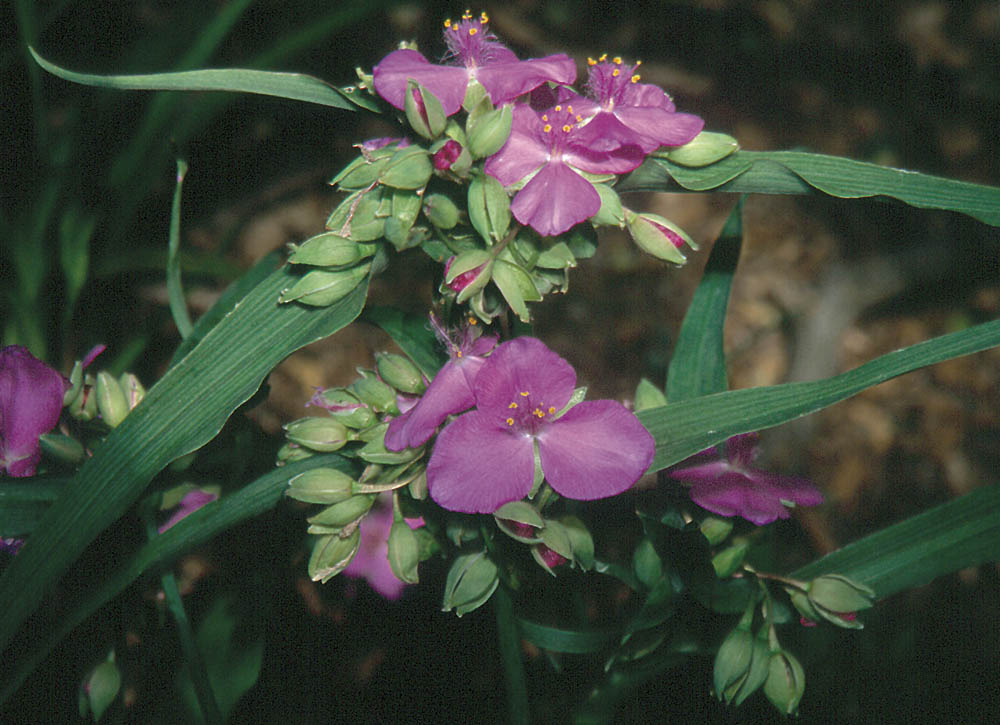
By Theresa M. Forte
 | |
| Chiefswood Park's native garden features varying heights, textures and hues. |
Wildflowers are plants that grow in the wild, some are native; others were introduced by European settlers (i.e. Queen Anne's lace, chicory, daisy and dandelion).
Midway through the drought of 2001, I headed out to visit a native plants nursery and garden just outside of Brantford, Ontario. I wasn't expecting to see much colour, after all, many of the lawns (and many gardens) around Southern Ontario were waning by this time.
When Ken Parker, owner of Sweet Grass Gardens, led me on a tour of his meadow garden, I was impressed. Towering cup plant, wild bergamot, quinine, compass plant and pale purple coneflower shone in the brilliant afternoon sunshine, they seemed oblivious to the lack of rain.
Even more surprising, this garden was designed to thrive in clay soils. No matter how many fancy gardening books you may read (and I have read my share) seldom, if ever, will you see the words 'clay' and 'recommended soil' in the same description.
Clay soils are tricky. During wet spells, they hold the moisture and are often waterlogged. Low-lying clay based gardens are often the last areas we can get started on in the springtime. My own garden is a good example. In certain areas in late March, there even appears to be a stream running along the borders. By mid-summer, the same gardens can be riddled with crevices, a sign of very dry conditions. The same patch of soil can go from one extreme to the other within a couple of short months. It is little wonder that tips for gardening on clay soils attracts the immediate attention of garden enthusiasts faced with these conditions.
|
To maintain a long season of interest, we choose native plants (including shrubs and trees for borders) that bloom in each of spring, summer and fall seasons. They are carefully selected to thrive in the particular site where the garden is located (in this case, clay) without any intervention after the garden becomes established. Parker noted: "the heart and soul of a plant lie below the ground." Consequently, patience is required as the root system develops the first year robust foliage and bloom will follow once this system is established. These deep roots are what will keep the plants going during periods of drought. Parker's planting recommendations for a native plants garden are easy to follow (and inexpensive). Mark out the garden; turn the sod over, top dress with 20 cm of sand, and plant. Cover the bare soil around the plants with a several layers of newspaper (or landscape fabric). Finally, cover the newspapers with a blanket of shredded bark mulch. Water and then leave them alone. Water again only if the young plants droop during dry spells. Cut back the previous year's growth in early spring when the new shoots emerge. As you can see, this garden will require very little in the line of maintenance once established. Very little weeding, watering and no fertilizing are required. This is truly low maintenance gardening. As an added bonus, the native plants will provide a habitat for wildlife such as butterflies, moths, bees, birds and small animals. While I would not recommend this type of garden for a front garden in suburbia, a challenging corner of the backyard, cottage, neighbourhood park or schoolyard may be the ideal spot to try a native garden. Parker suggested a visit to one of his recent projects to experience a large-scale meadow garden. Approaching Chiefswood Park, I could see an impressive tapestry of colour stretching toward the historic home of E. Pauline Johnson (Mohawk poet and author). Surrounded by simple lawns and mature trees, the garden stood like an island of inviting, sparkling colour. The planting resembled a Monet painting where yellows, pinks and mauves blended into a soothing haze above a sea of green. Mowed pathways encouraged visitors to experience the garden at eye and nose level. It was a simple yet memorable journey. With camera and tripod in hand, I slowly wound my way along the pathway. (There were innumerable photo opportunities for a camera buff such as myself). The experience was like being a child once again, dwarfed by five and six foot tall coreopsis, with wild bergamot, cup plant, Joe Pye weed and coneflowers dancing with the bees and butterflies in the afternoon sunlight. Fuzzy, caterpillar-like flower heads of Canada rye grass waved in the gentle breeze. Surprisingly, there were several levels of bloom within the meadow. In the mid-range, little bluestem grass, pale purple coneflowers and switch grass offered good displays. Decidedly, orange butterfly weed and pink-purple Ohio spiderwort punctuated the sea of green beneath the tall layers of bloom. A native garden is not established overnight. A large-scale meadow garden such as the one at Chiefswood Park is planted by seed at a rate of 10 pounds per acre, and will take four to seven years to mature. This particular garden is still a youngster as gardens go. Container grown plants were being introduced to diversify and improve the existing mix. Contrary to many consumers' beliefs, seed cannot just be sprinkled on existing lawns and a wildflower garden will magically appear. Some effort and planning are still required for success. It is of interest to note that many of the recommended plants will make wonderful additions to traditional borders. Switch grass forms an airy cloud of rosy blooms and seeds that last for months. I used the Ohio spiderwort as a container plant for my deck last summer, clusters of flowers bloomed non-stop above strap-like blue foliage for several months, and, did not sulk if I missed giving it a drink before going to work. Theresa Forte is a columnist, photographer and garden consultant based in Niagara Falls, Ont. |


